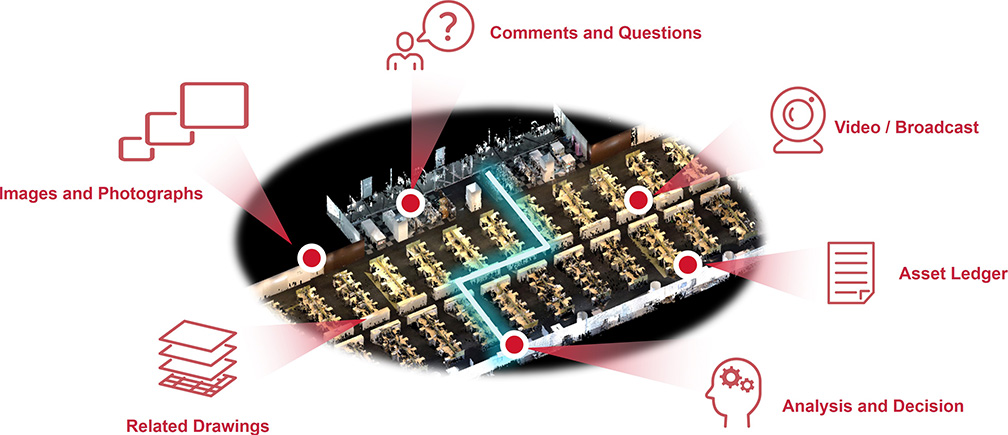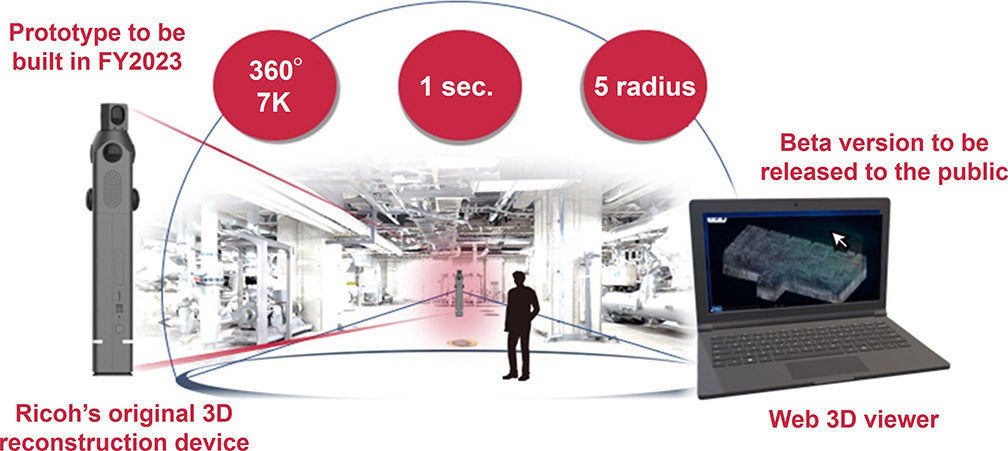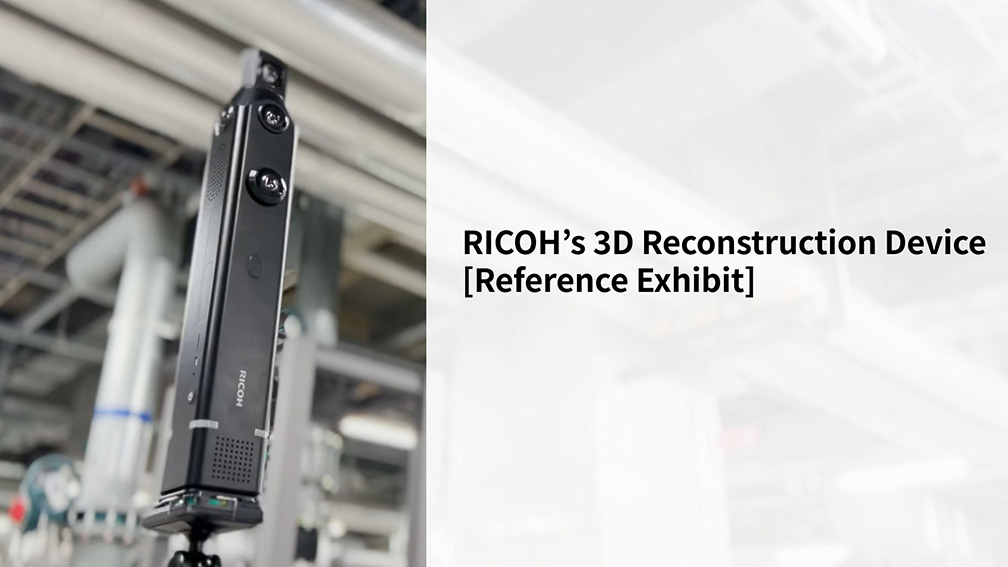- Home
- Ricoh's Technology
- AI Solution for Spatial Data Creation and Utilization
AI Solution for Spatial Data Creation and Utilization
Background
In the field of building maintenance and management, experts prepare data, conduct analyses, and make decisions based on existing drawings, photographs, ledgers, and other fragmented information. This process relies on tacit knowledge, and until now, it has been difficult to pass on this know-how and knowledge. In addition, the incompleteness of on-site information has made time-consuming survey and information sharing necessary.
New buildings are managed using BIM*, but it takes a great deal of effort and cost to handle existing buildings as BIM entities.
Recently, technologies have been developed to convert buildings around the world into digital data for use in BIMs. This enables digital management of buildings in which non-experts can understand the space and make appropriate decisions without having to enter the building.
- *
- BIM: Building Information Model, a system that allows architects to study building design by reproducing a three-dimensional model on a computer that is identical to the building being studied.
Solutions
Simple digitization is possible, even for buildings with insufficient data
After 3D reconstruction of an existing building, we can create a digital building that can be viewed as a virtual space by combining it with 360-degree images. In addition, fixtures and equipment within the building are classified and linked to the existing ledger to quickly provide the digital building to the building owner.

Compact, lightweight device capable of obtaining 3D information in just one second
We have developed a technology that allows anyone to easily acquire 3D information, even while the building is in normal operation. The acquired 3D restoration results can be viewed with a web browser or tablet terminal and can be immediately shared with remote parties involved. This technology will also be useful for updating digital data of buildings that are constantly changing due to repairs and renovations.
Replacing tacit knowledge with AI
The purpose of digitizing buildings is to use the power of computers and artificial intelligence (AI) to reduce building lifecycle costs*2 and maximize the function of buildings as business assets. Ricoh is deploying AI technology to integrate acquired point clouds and images, generate 3D CAD models from them, and develop functions to support measurement, planning, and simulation that is performed in various ways in digital buildings.
- *2
- Life cycle cost (LCC): The total cost of a building from planning and design to demolition.
These technologies can be used to recreate buildings digitally with ease and apply AI to support digital transformation in various use cases.

Technical highlights
Optical technology capable of acquiring color and distance information in all directions at high speed
Ricoh's proprietary 3D restoration device is both an application of, and a development in the optical technology of the “RICOH THETA” camera that can capture 360-degree images in a single shot. The distance is measured by shining a light on an object and measuring the time it takes for the reflected waves to return (ToF: Time of Flight method) to acquire point cloud data.
Normal 3D laser scanners can acquire point cloud data with high accuracy on the millimeter scale, but acquisition takes time, and they are generally large and expensive. By reducing the point cloud data acquisition accuracy to a few centimeters, we have achieved a high-speed acquisition time of 1 second, as well as a smaller and more lightweight device.
Simplified generation of digital buildings
The point clouds acquired from optical devices such as cameras and laser scanners are automatically aligned and connected with 360-degree images to create a 3D reconstruction that allows you to virtually look around the building as if you were inside it. It is also possible to automatically classify (segment) the walls, floors, ceilings, doors, and equipment contained in the building into clusters that are meaningful for construction and maintenance, as well as to extract some 3D shape models (fixture and equipment modeling) that can be handled with CAD. AI technology is also applied to some of these data conversions.
Multimodal AI technology that learns behaviors in digital buildings and supports on-site operations
Multimodal AI, which learns from multiple types of data (e.g., images and language) simultaneously and performs complex inferences, is effective in replacing the advanced analysis and quick decision-making based on the tacit knowledge of experts on digital buildings. For example, the AI can learn from the data derived from a skilled worker's virtual measurement survey on a digital building or the delivery plan for large equipment based on a simulation. As a result, the digital building itself will be able to provide accurate measurement support for construction purposes and highly accurate delivery routes that take into account obstacles to smooth passage in and out of the building. Using this AI support, even inexperienced engineers can make appropriate decisions in a short time.
Ricoh's vision
The use of digital buildings can lead to lifecycle cost reductions and management operation optimization for building owners. For on-site employees, the technology contributes to everything from work safety to reduced time and effort in sharing on-site information.
Through the optical technology, software, and AI technology cultivated over many years of multifunction printers development, we aim to make it possible to easily manage buildings digitally, and to transform construction and maintenance work.
